The Line has been one of the most discussed mega projects since its inception. This project, which has been criticized on many issues, naturally contains many questions. Although it may not satisfy those who are looking for a clear answer, we listen to the critical points and progressive questions of some people involved in the project in the newly published documentary.
It can be said that there are always questions and mixed feelings about the project. But seeing this utopic future city project as a big architectural milestone is keeping the ones involved excited. Although it is thought that the final product cannot be predicted exactly, it is possible to say that they think they embarked on a groundbreaking road in the planned process.
So what triggered the start of the NEOM The Line project? What kind of work took place in the process? Who was involved in the process at what point, and how is the process progressing? This article aims to provide you with a summary of the project and the thoughts of those working on the project as a deciphering of what was discussed in the documentary.
What triggered the idea of The Line?
The documentary starts with the words of Mohammad Bin Salman, the Crown Prince of Saudi Arabia and the chairman of NEOM Board Directors. He states that the population of Saudi Arabia is currently 32 million, and it will jump to 50-55 million in 2030. He adds that in 2030 the full capacity of the existing infrastructure in Saudi Arabia will be reached. And that raises the idea of creating a new city.
The problems and issues in the current cities and the leading future have also raised some questions and triggered a new urban development such as the Line. In the following, Antoni Vives, Chief Urban Planning Officer and involved with the NEOM in the Urban Planning Department, touches on this issue with the words, “The world is stuck in a traffic jam. The world is screwed by the lack of social interaction. The world talks about cities, but in reality, the world is talking about the slums. When they say energy, they mean pollution. The world needs a reset. Most of us live in cities, and this reset has to start in the city.”
How did The Line mega-project start?
Mohammad Bin Salman starts with a very simple sentence on the road to a new city idea. He expresses that they have an empty place for the 10 million people’s accommodation, so it should be like thinking from scratch.
“How and where do you start to design a city from scratch? What makes a successful city, and how do you avoid a dystopian nightmare?”
While talking about the initial ideas for the project, the idea of building a circle with connections of movement, mobilities, trains, etc. came to the fore. After brainstorming and the team works, they started a competition where there were a lot of good designers participating from around the world. Salman talks about the competition process; “All of them provided us cities based on the existing methods but with better solutions. Except for one, he adapted that idea and suggested that let’s turn it from a circle to a line. There, the idea had started, and we started to study it further.”
Tarek Qaddumi, the Executive Director of the Line says: “The brief was to build a city and you are not going to win a competition by not building anything. We thought about it a little, and if we were to build something, then it is probably going to be the tightest little footprint that you could.”
Who is involved with the project, and what do they think about it?
The documentary represents a significant point as it features the majority of architects associated with the 170-kilometer-long city, which has mostly been developed in secret. It is the first instance where these architects openly discuss the city publicly.
The featured architects in the documentary who are parts of the Line project or attended the competition are; Peter Cook and Erlend Blasted Haffner, the founders of Cook Haffner Architecture Platform; Branko Bela?evi?, partner of Cook Haffner Architecture Platform; Thom Mayne, founding partner of Morphosis; Eui-Sung Yi, partner of Morphosis; Roger Soto, design principal of HOK; Alexander Rieck, co-founder of LAVA; Reinier de Graaf and Iyad Alaska, partners OMA; Wael Sleiman, architect at OMA; and Michael Bischoff, partner of Pei Cobb Freed & Partners. They were all looking excited about the idea and curious about the resulting outcome of the project. One common thing about the comments is that they were all very skeptical at the beginning.
Cook Haffner Architecture Platform is identified as the project’s main designer in the documentary. And Peter Cook elaborated on how the project takes inspiration from his Plugin City ideas from the 1960s with Archigram. He said, “There is a certain moral atmosphere – we shouldn’t be too clever…You shouldn’t need to experiment, don’t do anything too funky – I came out of a funky period.”
The first thoughts of the architects sound like they were thinking about how interesting and questionable the project is. Roger Soto, the design principle of HOK, said: “Honestly, you can’t look at this the first time and not ask yourself what are they thinking.” he adds, “But then as soon as you start to get into it, you start to sort of think about the possibilities of it. And your mind starts to sort of begin to imagine that it is maybe possible.”
The OMA got an invitation to participate in the competition for an experiment on vertical urbanism. Reinier de Graaf explains that he first learned about the project in the meeting with Iyad Alaska, and his first reaction was “… o-okay.” He continues: “The more he talked about it, I learned that this radicality was the product of a question rather than our answer. The curious thing was the product of a client that apparently was more radical than us.” Antoni Vives states that Peter Cook’s first reaction was like “what are you drinking my friends?” and after one month he was like “we are going to make this.”
What is The Line?
The Line claims to innovate every aspect of city living, but for the most, it has lived, since its genesis in 2070. The development of the idea has been undertaken in strictest secrecy. Reinier de Graaf said: “The fact that it was secret is, of course, curious and the relation to how big it is…” And the development process still continues. The documentary also has been claimed that The Line is %100 sustainable, reduced footprint on the land, powered by renewable energy, consigns the card history and creates a 5-minute walkable city. And points out that to do this, they have to reinvent almost everything, about how we live and how cities work.
The Line will be 170 kilometers long; there will be 140 modules, each one 200 meters wide and 800 meters long. But also standing 500 meters above sea level. Each module will be able to accommodate about 80,000 people. And the finish line will have the capacity to house a population of 9 million.
Wael Sleiman, an architect from OMA, said: “Humans in general, they tend to go horizontal and avoid vertical by all means possible. Lifts and stairs and things like that are abrupt interruptions during movement. They hate it.” So, in such a vertical utopian city, the transportation system is also one of the key points discussed.
Eui-Sung Yi from Morphosis said: “What if we just say that the ground is now multiple grounds rather than a singular ground that we always go down to.” In the discussions on transportation, cars were pointed out as one of the biggest problems of the current cities, and ideas for the carless city produced a subway-like system. The spine of the Line is developed as a fast rail system that connects point A to the B to the C to the mountains. Roger Soto explained the system as: “Vertical transportation is a little bit more like a subway system. You’re not like calling an elevator, it’s just arriving on a regular basis. And you’re moving up and down.”
Wael Sleiman expressed that “No matter how much you’d like to plan the city, people use it in a completely different way. And the sociopolitical environment will turn it into something else. So you have to be flexible to take those changes and quickly adapt. If you don’t adapt, you’ll end up disappearing.” Based on these concerns, the design allows changes before or after construction. It is possible to unplug a certain part, add something in the factory and plug it in again.
Who will be the users?
In the documentary, an important question has been raised: “Who will actually live in the Line? Will it just attract the rich and curious, seeking a temporary adventure? Or can it be somewhere people will actually want to settle and make their home?” Well there is no solid answer to the question. Petr Suska, the head of the Urban Economy Innovation Department, said: “And we will answer questions that we are not asking now because no one else is daring to. So the target users that might be actually living there are quite broad.”
Why is it in Saudi Arabia?
Well, one of the main reasons is the possibility of land and resources. Mohammad Bin Salman said in the documentary: “We think about what kind of opportunity we have. So we have the cash, we have the land, we have the stability, we have the good infrastructure, we are a G20 country.” Petr Suska said: “Europe is very crowded, and we don’t have that space. That region that the NEOM is being built has that freedom.”
“They say a lot of projects in Saudi Arabia can’t be done, they’re too ambitious. They can keep saying that and we can keep proving them wrong.”
–Mohammed bin Salman Al Saud, Crown Prince of Saudi Arabia
Some key sentences from the architects in the documentary:
“If it succeeds, it will be a new Babylon, so to speak. And if it doesn’t succeed, it will be an interesting phenomenon,” said Peter Cook, founder of Cook Haffner Architecture Platform. “What it will lead to will be interesting for all architects. It will have an impact on our profession, I think,” said Erlend Blasted Haffner, founder of Cook Haffner Architecture Platform.
“It is very easy to imagine that it will go wrong. Maybe this is essential to imagine it going right. And of course, architects are by definition, optimists.” said Reinier de Graaf, partner of OMA.
“The questions and the threat on our planet are so immense, that I really don’t understand why we try to answer these questions with old answers,” said Alexander Rieck, co-founder of LAVA.
“There was a moment in the development of the project when people started saying, ‘I could live there’. People are starting to believe that it’s possible” said Branko Bela?evi?, partner of Cook Haffner Architecture Platform.
“You can imagine the amount of naysayers, you could imagine the number of critics and those who are kind of worried if it was even possible,” said Eui-Sung Yi, partner of Morphosis.
“We as architects and urbanists have to think differently about everything,” said Roger Soto, design principal of HOK.
“It is inspiring to take things that we’ve seen happening in sci-fi and say, is it really sci-fi? Or is it really the world, that’s what is at the heart of this,” said Michael Bischoff, partner of Pei Cobb Freed & Partners.
The project, which manifests itself with a utopian perspective in the century we live in, also receives many criticisms. While the documentary allows us to have an idea of what those involved in the project think, we can see the question marks they have in them from a positive side, their excitement, and their thoughts that they have taken a big step as a future projection. Although there are many controversial thoughts about the project, the documentary does not point out the concerns and critics about them, rather it is possible to say that it aims to give an inspirational and exciting view of the points.




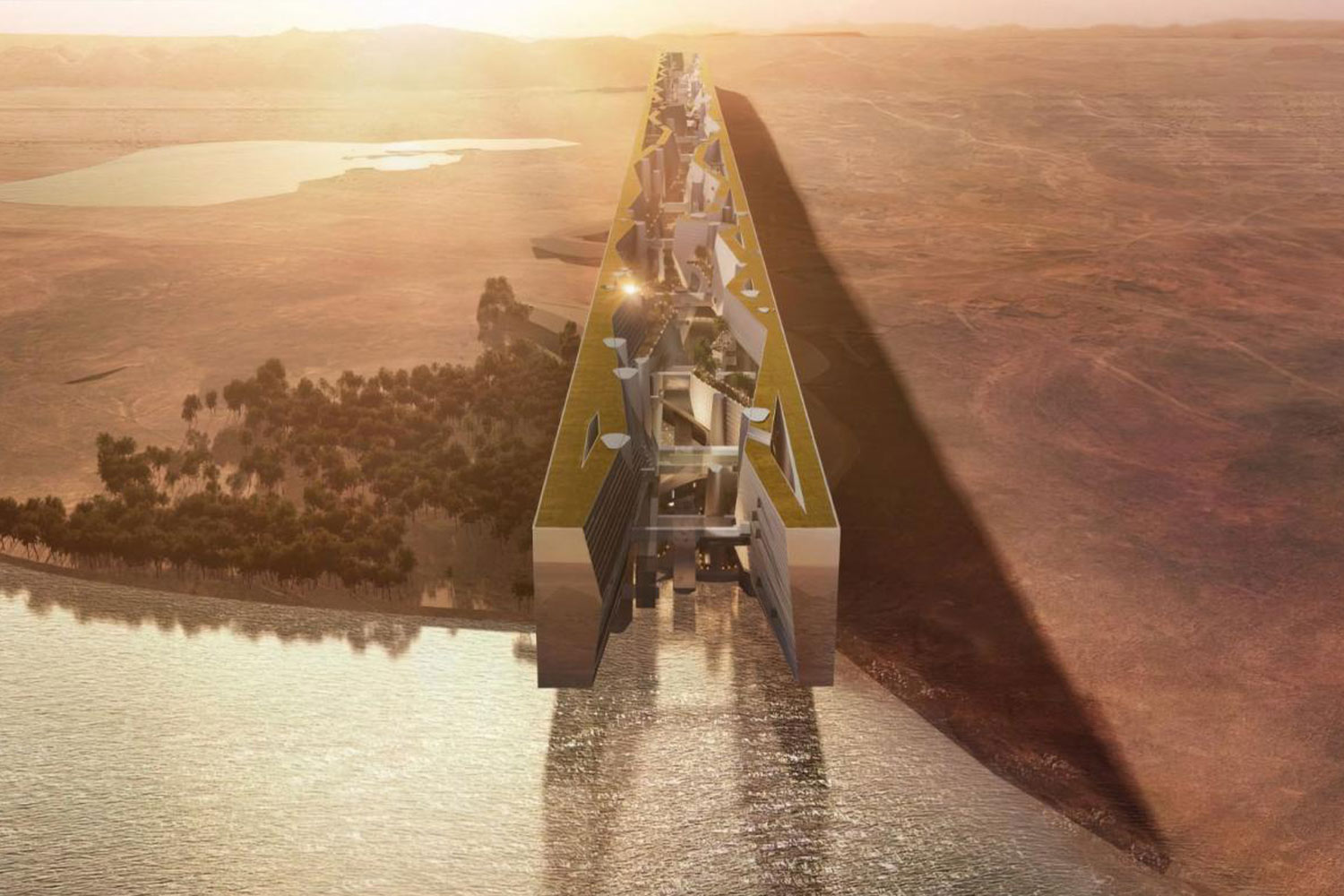
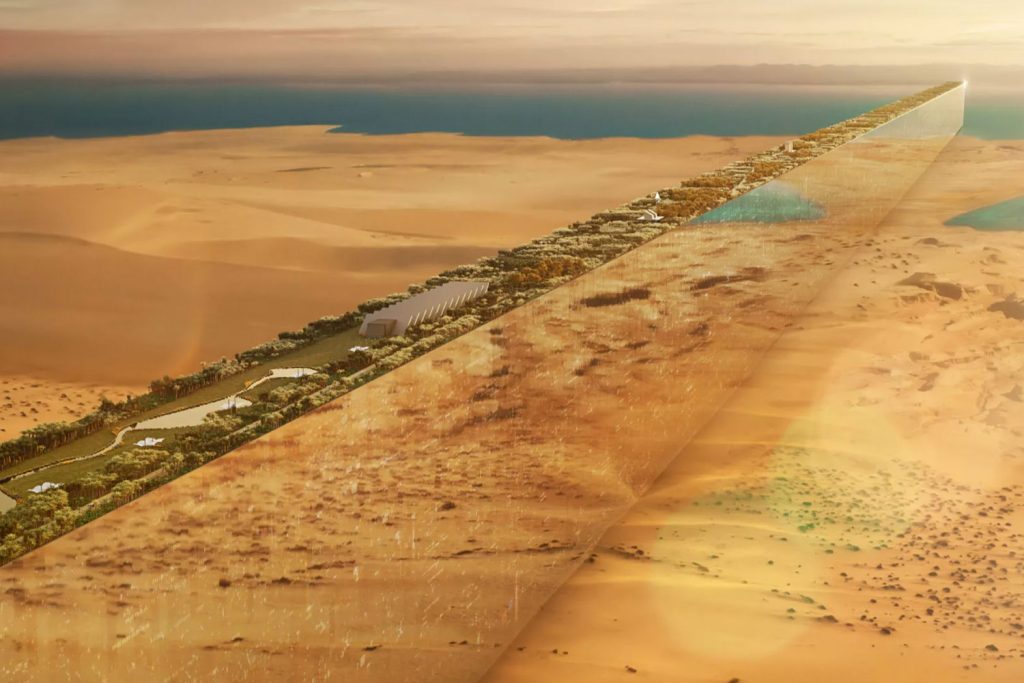
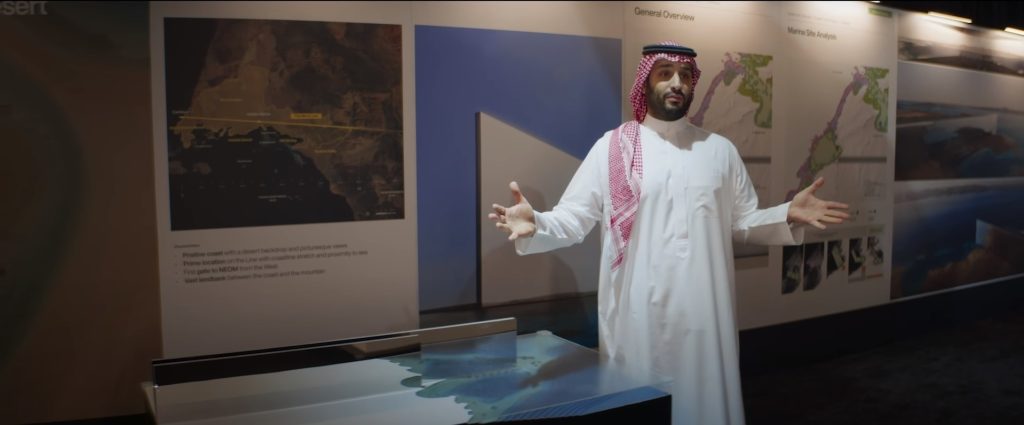
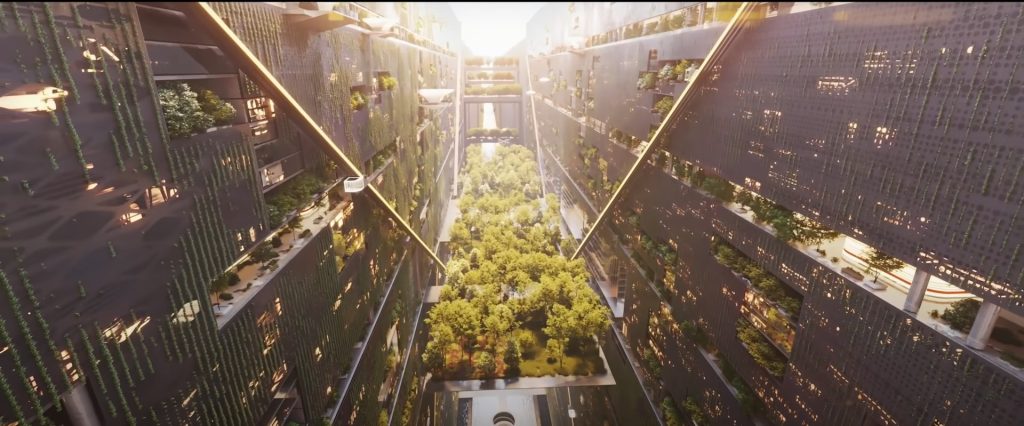
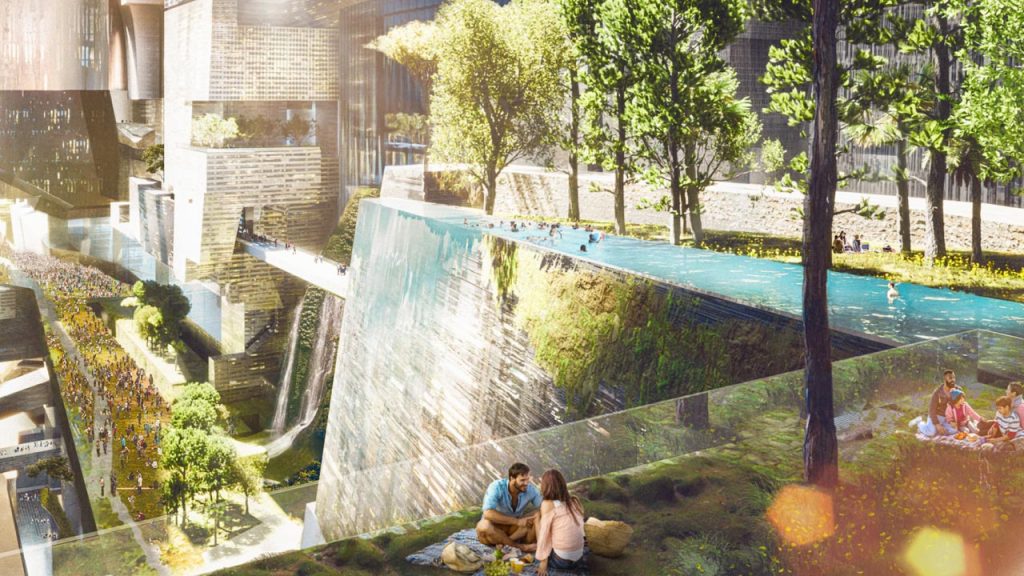
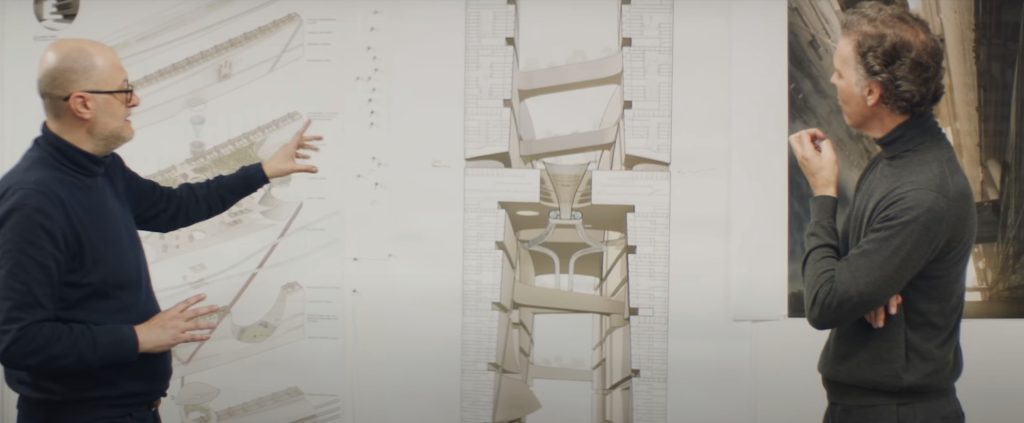
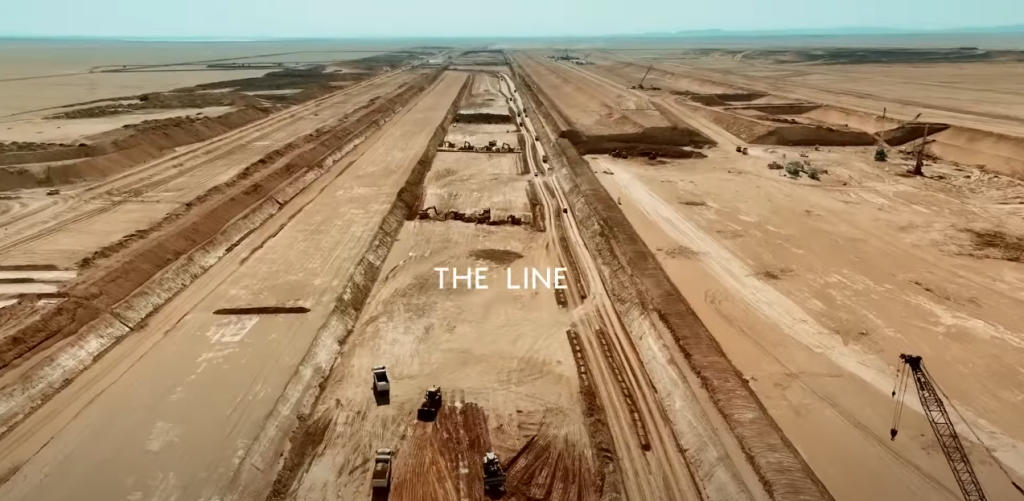













Leave a comment